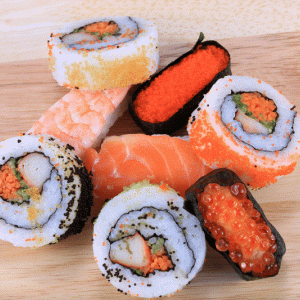
Scientists used DNA barcoding (testing a short section of the genome) to check whether fish in Metro Vancouver are really the species that they are labelled as being. They found that 25% of fish sampled were mislabelled, with error rates higher in restaurants than in grocery stores or sushi bars. Since the price of the claimed species was often higher than that of the real species, the paper suggests that some labelling may be intentional. However, the paper also suggests that some errors could be due to confusion between vernacular fish names (rather than scientific species names).
Abstract
The complexity of seafood supply chains and fish naming systems has rendered the traceability of a seafood product challenging if not impossible, creating loopholes for intentional or unintentional illicit practices that erode the market transparency and integrity. DNA barcoding has been extensively applied to evaluate the integrity of seafood markets worldwide. However, little information is available to comprehensively assess the fish market integrity in Metro Vancouver, the 3rd largest metropolitan city in Canada. Therefore, we conducted a market survey by collecting 285 finfish samples from grocery stores, sushi bars and non-sushi restaurants in Metro Vancouver and used DNA barcoding and DNA mini-barcoding to analyze the compliance of product market names with allowable species in accordance with the Canadian Fish List. On average 25% of the samples were mislabeled. Restaurants had the highest mislabeling rate (i.e. 29%), followed by grocery stores (i.e. 24%), while sushi venues (i.e. 23%) had the least mislabeling incidence. Among the mislabeled products, snappers presented the highest mislabeling rate (i.e. 91%). Evidence of the various motivations of the mislabeling, including intentional substitution using less expensive species, purposed mislabeling of by-catch or illegal, unreported and unregulated fishing products, and unintentional misidentification or misuse of dialects and vernaculars were all observed. To protect the integrity of the seafood supply chain, several recommendations on the labeling standards are discussed: harmonize the accepted common names with major trading countries; enforce labels to include scientific names for fish products; disapprove the use of vague multispecies generic names; and require labels to provide information of geographical origins and catching/farming methods. These actions have contributed to the significant improvement of seafood market integrity in the European Union and are anticipated to be effective in Canada.
Reference
Hu, Y., Huang, S.Y., Hanner, R., Levin, J. and Lu, X., 2018. Study of fish products in Metro Vancouver using DNA barcoding methods reveals fraudulent labeling. Food Control. 94, pp.38-47.
Read the full paper here. See also the Foodsource resource How do food systems affect fish stocks and marine habitats?







Post a new comment »